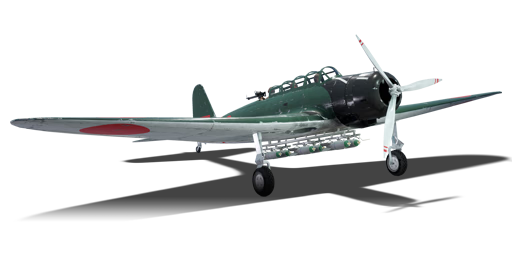



The B5N2, designated as the Type 97 Carrier Attack Bomber (九七式艦上攻撃機), was the standard Japanese carrier-based torpedo/high-level bomber during World War II. With its first flight in 1937, it served the Japanese Navy very favourably with its highly capable ordnance and was considerably faster than any Allied counterparts. Due to delays in the production of the B6N (Family), the B5N saw service from 1937 all the way until 1945, supplementing the B6Ns in secondary roles. While it saw initial service in the Second Sino-Japanese war, it played a major role in the opening phase of the Pacific war, contributing to the successes at Pearl Harbor, Coral Sea, Midway, and Santa Cruz Islands.
The B5N2 has been in the game since the start of the Open Beta Test prior to Update 1.27. While a considerably large target for the size of its wings, the B5N is a very manoeuvrable and relatively fast plane, able to outmanoeuvre and outspeed enemy interceptors. The B5N also carries a favourable array of ordnance for both high and low-altitude bombing on top of ship attacks.
flaps
flaps
flaps
brake
| Belt | Belt filling | Armor penetration (mm) at a distance: | |||||
|---|---|---|---|---|---|---|---|
| 10 m | 100 m | 500 m | 1000 m | 1500 m | 2000 m | ||
| T/AP/Ball/AP/I/IAI | 13 | 12 | 7 | 3 | 2 | 0 | |
| T/AP/AP/IAI/AP | 13 | 12 | 7 | 3 | 2 | 0 | |
| AP/T | 13 | 12 | 7 | 3 | 2 | 0 | |
6 × 60 kg Navy Type 97 Number 6 ground bomb
6 × 60 kg Navy Type 97 Number 6 ground bomb












Flight performance | |
|---|---|
Survivability |
|---|
Weaponry | |
|---|---|